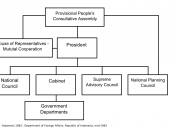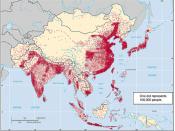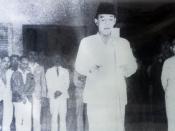Up to 1942, Indonesia had been stably ruled by a three-and-a-half century-old Dutch regime which continued to dampen Indonesia's desire for an independent, sovereign state. The Japanese invasion, three-and-a-half years brief as it was, contributed significantly to the development of the modern Indonesian state. This period is a stage where Indonesia becomes the spotlight on mass communication, as parties of various political interests strive to realise their aspirations for Indonesia. To one's amazement, the Japanese invasion of Indonesia is a relatively recent event in the history of the modern world, yet leaving scars as well as miracles that continue to impact the present day.
The attraction in this prominent chapter lies in the conflict of Japanese and Indonesian interests, and the scope of the lives affected by it. 1942-1945 was a period where the Japanese aspiration to become the so-called "light, leader, and protector" of Asia, and the Indonesian vision for sovereignty were simultaneously intensifying.
Thus was birth of the "Triple A" Japanese propaganda, whose goal is to obliterate Western influences among Indonesians and to activate Indonesians in the interests of Japanese triumph (Ricklefs, 249). Concurrently, Indonesian nationalism began to explode as prominent, educated Indonesians endeavour to mobilise inhabitants of the archipelago to rise up against foreign rule and prepare to declare Indonesia's independence.
Cunningly asuming the identity of Indonesia's older brother, the Japanese started promoting the "Triple A" slogan: "Japan, the light of Asia. Japan, the leader of Asia. Japan, the protector of Asia." This mass communication attempt was designed to reform the Indonesian economy in order to "support Japan's war effort and its plans for long-term economic domination of East and Southeast Asia." (Ricklefs, 249). The usage of Japanese was promoted; and movies, drama, traditional art and prominent Indonesian figures involved in such work were employed to...



Well-written essay.
Well-written essay. Needs a great conclusion and correction of grammatical errors to really make it a strong work. Also, what is BPUPKI?
1 out of 1 people found this comment useful.